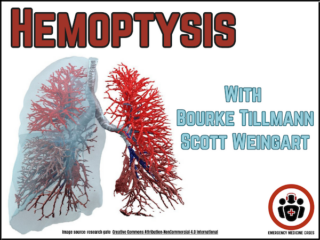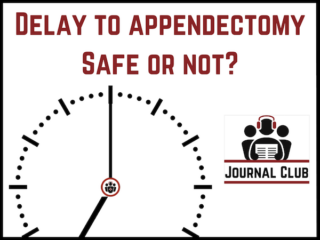Most Recent
Ep 189 Commonly Missed and Mismanaged Wrist Injuries
In this part 1 or our 2-part podcast series on wrist injuries Dr. Arun Sayal and Dr. Matt DiStefano answer such questions as:when should we suspect a DRUJ injury, why is it important to pick up DRUJ injuries in the ED, and how does it change our management? Why is the lateral x-ray view so important in picking up commonly missed wrist injuries? When it comes to distal radius fractures, how are Colles vs Barton's vs Smith's fractures managed differently in the ED? What are the 2 key x-ray signs we should look for on the AP and the 2 key x-ray signs we should look for on the lateral for every wrist injury? and many more...
EM Quick Hits 53 Postpartum Hemorrhage, Serotonin Syndrome, TBI Herniation Syndromes, Ulcerative Colitis, Pediatric C-Spine Immobilization, Global EM
On this month's EM Quick Hits podcast: Anand Swaminathan on update to ED management of postpartum hemorrhage, Nour Khatib on serotonin syndrome and its mimics, Katie Lin on an approach to recognition and management of severe TBI and brain herniation syndromes, Hans Rosenberg on the ED management of ulcerative colitis, Heather Cary on pediatric c-spine immobilization controversies and techniques, Navpreet Sahsi on the difference between humanitarian and development work... Please support EM Cases with a donation: https://emergencymedicinecases.com/donation/
Ep 188 Hemoptysis – ED Approach and Management
Key principles and approach to management of both non-massive and massive hemoptysis with Dr. Scott Weingart and Dr. Bourke Tillmann, who answer questions such as: What are the factors to consider in the decision to intubate patients with massive hemoptysis? How can one reliably distinguish hemoptysis from pseudohemoptysis? What is the evidence for tranexamic acid in patients with hemoptysis? What are the best strategies for suctioning blood from the airway to improve visualization during endotracheal intubation in crashing hemoptysis patients? What is the role of bronchoscopy and how should it be integrated into the hemoptysis management algorithm? How does one's hemorrhage control strategy change when pulmonary embolism is the underlying diagnosis? and many more... Please support EM Cases with a donation: https://emergencymedicinecases.com/donation/
Global EM 5 Is it Ethical? 5 Core Principles When Choosing a Global Health Project
Dr. Navpreet Sahsi outlines 5 core ethical principles in choosing and participating a global health project on EM Cases' Global EM blog...
Journal Club 5 Appendicitis Delay to Appendectomy – Safe?
You diagnose uncomplicated appendicitis in the ED. The on call General Surgery team wants to wait until the next morning to perform an appendectomy. Is your patient at risk for appendiceal perforation with a delay to surgery? Dr. Rohit Mohindra and Dr. Shelley McLeod analyze the latest RCT that attempts to answer this question, the PERFECT study, on this EM Cases Journal Club...
EM Quick Hits 52 Infant Vomiting, Orbital Cellulitis, Prehospital TXA in Trauma, Prevention and Treatment of Delirium, Procedural Skills Decay, Altitude Sickness
In this month's EM Quick Hits podcast: Sarah Reid on an approach to Infant Vomiting, Brit Long on Orbital Cellulitis essentials, Justin Morgenstern on the PATCH trial - Prehospital TXA in Trauma, Christina Shenvi on Prevention and Treatment of Delirium, Jason Hine on Procedural Skills Decay, Aaron Billin on Altitude Sickness... Please support EM Cases with a donation: https://emergencymedicinecases.com/donation/







